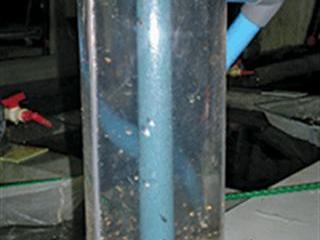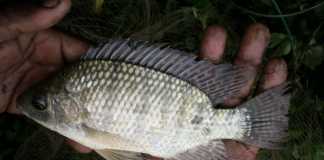
You’ll often come across tilapia culture units where the farmer complains about poor growth and blames the fish for not performing according to the stats in the literature. Invariably, however, the problem is poor husbandry – that is, over-stocking, inadequate water filtration, low feed quality or quantity, and low temperatures.
Tilapia are well known for being able to survive poor living conditions. Unfortunately, this hardiness has encouraged many farmers to take short cuts when it comes to providing the optimal culture conditions – but survival is one thing and fast growth another. We’ve discussed the importance of filtration in a previous column; let’s look at other factors that comprise good husbandry.


Stocking density
‘Stocking density’ is how many fish can be kept in a limited volume of water, yet still grow to the intended market size within a specific period. Simply put, space is still important for rapid growth. A single tilapia can’t grow to 500g in a 2l tank even if the water quality, feed and temperature are optimum – it just won’t happen. In an efficient RAS (re-circulating aquaculture system) with good filtration, a safe stocking rate is around one fish per 10l water. Obviously, there can be higher rates with fingerlings and less with larger, near-market sizes. Hence, a grow-out system of 100 000l may accommodate 10 000 fish. If market size is 0,5kg, this equates to a production of 5t per cycle.
Feeding
At one farm where fish health was excellent, but still growing very slowly, I asked the farmer how much he fed his fish daily. We did some calculations and it transpired that he was feeding at under 1% body mass equivalent per day. For half-grown tilapia (100g to 150g), 4% is recommended – therefore he needed to throw in nearly four times as much feed as he was doing to get the desired growth.
In an artificial containment clear-water system (as opposed to an earth-pond), fish obtain virtually no supplemental feed apart from the ration given. Growth is completely dependant on the amount and quality of this ration. At the other end of the spectrum, excessive feeding results in waste (at best), or serious water pollution when uneaten feed pellets break down and form toxic substances that could lead to large fish mortalities.
Water temperature
All tilapia love warm water. Research indicates that a temperature of 28°C to 30°C will see a growth three times greater than temperatures of 2°C to 23°C. As with any fish, tilapia have low and high tolerance limits, as well as a preferred range at which growth is fastest. For Oreochromis mossambicus, (blue kurper), the lower limits are around 9°C to 12°C (depending on the strain), with the upper limit near 40°C (the higher the temperature, the less oxygen available).
The fish become seriously stressed and won’t feed at temperatures of 10°C to 15°C. Rapid growth can be expected at 27°C to 33°C (oxygen depletion becomes a factor past 35°C). Fry are more tolerant of elevated temperatures than sub-adult or adult fish, and this should be taken into account when designing your culture system. Fry growth at 30°C to 32°C is extremely rapid, while a grow-out temperature of 26°C to 28°C is ideal for larger fish (and allows for the ‘insurance’ of adequate oxygen saturation in the event of power outages.)
Tilapia will overwinter quite successfully at 15°C, but no growth should be expected. Most won’t survive outdoors where there’s frost in winter. Two exceptions are the diminutive vlei kurper (Tilapia sparrmannii) and Oreochromis aureus from Israel. O. niloticus is distinctly less cold-tolerant than O. mossambicus, while trials in Zambia have shown that O. andersoni (three-spot tilapia) grows faster at lower temperatures than the Nile tilapia.
Nicholas James is an ichthyologist and hatchery owner. Contact him at [email protected] with ‘Aquaculture’ in the subject line.












